| Home | Nature Weekly Index |
5 October 2014 | Field Trip | Sungei Buloh Wetland Reserve |
Last Saturday, I made my second trip to Sungei Buloh Wetland Reserve trip this year. The first trip was 5 months back in April. These days, the chance of finding any new plant in this mangrove enclave is relatively low. Therefore, my focus was more on the small moving creatures or minibeasts such as insects and spiders. To my surprise, I did find a new plant, Azadirachta indica (Neem) near the end of the walk; all because of some snails. While walking along a track scanning for creatures in the vegetation lining the side of the track, I noticed a tree with several Giant African Land Snail (Achatina fulica) resting along its trunk. There were many trees around but none had any snail on it. I was rather curious on why the snails preferred this particular tree. And as they say, the rest is history.
While searching around, I found another equally matured tree just a few metres away and both were bearing fruits. Similarly, the other Neem tree was also having several snails on its trunk. Judging from the size of the 2 trees, they had to be around for years. I had been walking below them all this while without knowing their presence. As to why the snails prefer to rest on this tree, I have yet to find an answer.
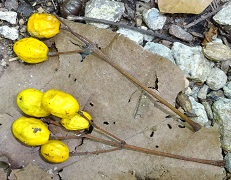
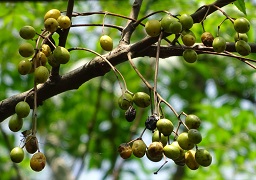
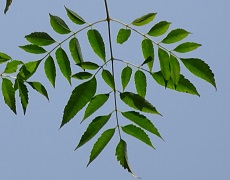
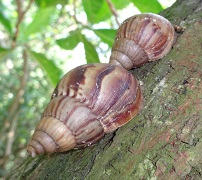
Along the walk, I had counted at least 10 Pale Mottle butterfly (Logania marmorata damis), including 2 mating pairs. Except for the mating pairs, they tend to rest on plants where the ants gathered. On one particular flower head of the Spiral Flag plant (Cheilocostus speciosus) that was full of ants, there were 6 of them on it. Not too far from this gathering on a young Sea Hibiscus (Talipariti tiliaceum), I located a small caterpillar that should belong to this butterfly.
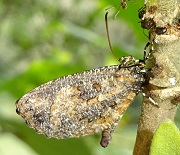
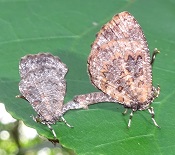
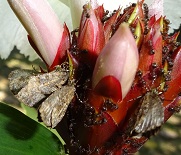
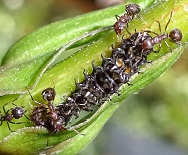 These ants are likely to be
Cocoa Black Ant (Dolichoderus thoracicus),
a species commonly available in wild and forested areas. This butterfly and its caterpillar obviously enjoy a good relationship with
ants.
These ants are likely to be
Cocoa Black Ant (Dolichoderus thoracicus),
a species commonly available in wild and forested areas. This butterfly and its caterpillar obviously enjoy a good relationship with
ants.
As far as the variety of minibeast sightings is concern, this was a much fruitful trip than the one in April. Below were more minibeast uncovered. From left to right: (1) a female Telamonia dimidiata spider, (2) a caterpillar of the Arhopala centaurus nakula butterfly protected by the red ants (Oecophylla smaragdina) while feeding on the young leaves of the Sea Almond (Terminalia catappa), (3) a bug (Homoeocerus bipustulatus), (4) a grasshopper nymph of Valanga nigricornis, (5) a tiny scarab beetle (Dasyvalgus sp.), and (6) a cricket (Ornebius rufonigrus).
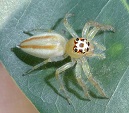
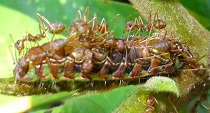
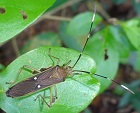
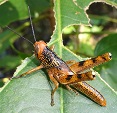
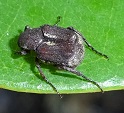
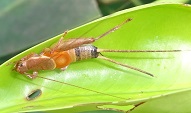
Update: 31 October 2014
I had wrongly identified the Neem Tree above. It should be a Bead Tree (Melia azedarach) instead. Bead Tree has 2-pinnate or 3-pinnate leaves while Neem Tree has single pinnate leaves.